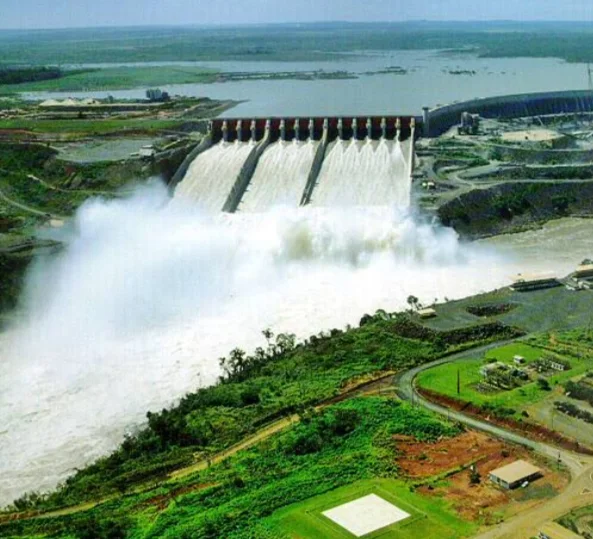Hydropower in Brazil: A Story of Reliance, Challenges, and Future Directions
Hydropower has played a dominant role in shaping Brazil's energy landscape, accounting for a staggering 66% of the country's electricity generation.
Hydropower Capacity in Brazil
Note: The specific capacity of hydropower plants in Brazil can vary over time due to factors such as maintenance, upgrades, and changes in water availability. For the most accurate and up-to-date information, please consult recent reports from the Brazilian government or energy agencies.
Here's a table providing a general overview of hydropower capacity in Brazil:
| Hydropower Plant | Capacity (MW) | Location |
|---|---|---|
| Itaipu Dam (shared with Paraguay) | 14,000 | Paraná River |
| Belo Monte Dam | 11,233 | Xingu River |
| Jirau Dam | 3,750 | Madeira River |
| Santo Antônio Dam | 3,133 | Madeira River |
| Furnas Dam | 2,200 | Rio Grande River |
| Três Marias Dam | 1,800 | São Francisco River |
| Sobradinho Dam | 1,700 | São Francisco River |
| Tucuruí Dam | 1,600 | Tocantins River |
| Ilha Solteira Dam | 1,600 | Paraná River |
| Estreito Dam | 1,500 | Tocantins River |
| Total | 65,546 |
Key Points:
- Itaipu Dam: As one of the largest hydroelectric power plants in the world, Itaipu Dam contributes significantly to Brazil's energy production and exports.
- Amazon Basin: The Amazon Basin, with its vast network of rivers, is a major source of hydropower generation in Brazil, with plants like Belo Monte, Jirau, and Santo Antônio.
- Southeast Region: The southeastern region of Brazil, including states like Minas Gerais and São Paulo, also has a significant number of hydropower plants.
With its extensive river systems and abundant rainfall, Brazil possesses the second-largest hydropower potential globally, estimated at roughly 260 GW.
This article delves deep into the intricacies of hydropower in Brazil, exploring its impacts, challenges, and future prospects. We'll analyze data, examine current trends, and discuss how this crucial renewable energy source is evolving in the face of a changing climate and growing energy demands.
Historical Significance and Current Status
Brazil's hydropower story began in the 1960s and 70s, fueled by rapid industrialization and a need for reliable power sources. Large-scale projects like the Itaipu Dam, the world's second-largest hydroelectric facility, became symbols of national development. Today, Brazil boasts a network of over 2,000 hydroelectric power plants, with a total installed capacity of over 100 GW.
Here's a table showcasing some key statistics:
| Statistic | Data | Source |
|---|---|---|
| Installed Capacity | 104.6 GW | International Hydropower Association (2022) |
| Annual Generation | 426.8 TWh | U.S. Energy Information Administration (2020) |
| Share of Electricity Generation | 66% | U.S. Energy Information Administration (2020) |
| Number of Hydropower Plants | Over 2,000 | Brazilian Ministry of Mines and Energy (2021) |
Benefits of Hydropower in Brazil:
- Low-cost electricity: Hydropower offers a relatively inexpensive source of clean energy, contributing to Brazil's economic growth and affordability of electricity for its citizens.
- Reduced greenhouse gas emissions: Compared to fossil fuels, hydropower has minimal carbon footprint, supporting the country's climate change commitments.
- Energy security and grid stability: Hydropower plants provide reliable baseload power, ensuring grid stability and meeting peak demand periods.
- Job creation and economic development: Construction and operation of hydropower plants generate employment and stimulate local economies, particularly in remote areas.
Challenges and Environmental Concerns
Despite its undeniable benefits, hydropower in Brazil faces significant challenges:
- Droughts and climate change: Droughts, exacerbated by climate change, can severely impact hydropower generation, leading to energy shortages and price hikes.
- Social and environmental impacts: Construction of large dams can displace communities, disrupt ecosystems, and affect biodiversity. Additionally, reservoir sediment buildup reduces power generation capacity over time.
- Licensing and regulatory hurdles: Complex licensing procedures and environmental regulations can delay new projects, hindering expansion and modernization of the hydropower sector.
Future Directions and Renewable Energy Mix
Recognizing these challenges, Brazil is exploring alternative energy sources like wind and solar power to diversify its energy mix and reduce reliance on hydropower. Additionally, the focus is shifting towards smaller, run-of-river hydropower plants with less environmental impact.
- Modernization and rehabilitation: Existing hydropower plants are undergoing modernization to improve efficiency and extend their lifespan.
- Sustainable practices: Implementing sustainable practices like sediment management and fish passage solutions are crucial to mitigate environmental impacts of existing and future projects.
- Community engagement and compensation: Engaging communities affected by hydroelectric projects and providing adequate compensation are essential for social sustainability.
Conclusion
Hydropower has been the backbone of Brazil's electricity generation for decades, providing clean, affordable, and reliable power. However, the sector faces challenges related to climate change, environmental concerns, and social impacts. Moving forward, a balanced approach is needed, prioritizing sustainable practices, diversifying the energy mix, and ensuring responsible development while harnessing the potential of hydropower for a secure and sustainable energy future.


